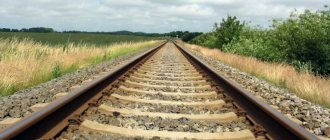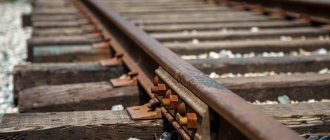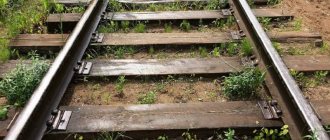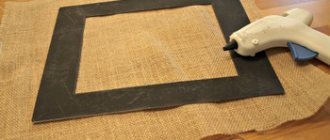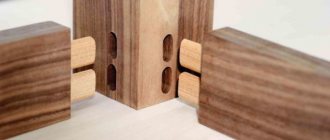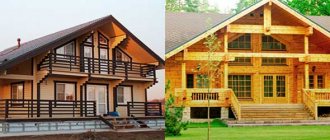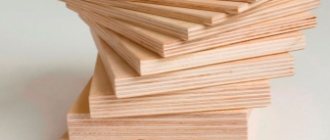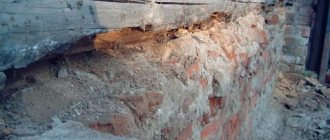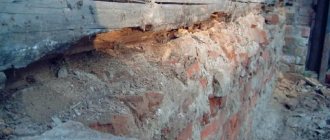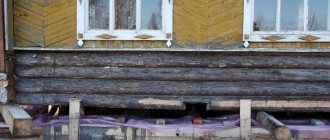Articles
All photos from the article
There is a GOST for wooden sleepers - this is GOST 78-84 and the latest, supplemented by GOST 78-2004, which regulates the technical parameters of wood products, dimensions and impregnation. The main purpose of such a profile is as a base for railway rails, although they can be widely used in construction as a durable beam for various architectural structures.
Below we will tell you about the technical and geometric parameters of such products, the method of their installation and provide you with a video in this article.
Repair of railway track by PCH team
Introduction
In our modern times, increasing capacity for passenger and freight transportation using railway transport is a pressing issue, which requires the government of the Russian Federation and the management of Russian Railways to quickly solve new tasks. When implementing this issue, it is necessary to increase the speed of trains, increase the weight characteristics of the formed trains, and also continue to engage in large-scale electrification of railway tracks. Today, the volume of work related to strengthening the railway track is increasing. For this purpose, heavy rails P75 and P65 are laid, rail bases made of reinforced concrete are used, and seamless tracks are created. The rail track also changes directly. All this is achieved by laying a series of circular curves, lengthening the transition curves and increasing the elevation of the outer surface of the rail.
Russian railways operate about two hundred thousand switches of various types, each of which is a complex and expensive element of railways. Ensuring the safety of cargo and passenger trains, the uninterrupted transportation process and improving the economic indicators of the entire track facilities is achieved by the reliable operation of the designated units.
In recent years, increased attention has been paid to the switch industry on the Russian railway. Technologies and designs of switch drives are currently being improved. Current maintenance and laying technologies are under constant control.
The priority areas of the switch industry are: developing new conditions in various operating conditions, ensuring constant monitoring by assessing their reliability and strength of all components. It is imperative to carry out new developments in the design of pointer drives, their mathematical and theoretical basis.
When choosing the structure of a railway track, its design features and type, technical, economic and technical calculations must be taken into account and form the basis, taking into account operational experience, analysis, careful design and scientific research.
Notes
- ↑ 1 2 Sleeper
- article from the Great Soviet Encyclopedia. - ↑ 123456
Rail transport: Encyclopedia / Ch. ed. N. S. Konarev. - M.: Great Russian Encyclopedia, 1994. - 559 p.: ill. - ↑ 12
Hay 1982, pp. 437-438. - Hay 1982, p. 477.
- Grant 2005, p. 145.
- Metal sleepers metal4u.ru/articles/by_id/214
- Great Russian Encyclopedia: In 30 volumes / Chairman of scientific editor. Council Yu. S. Osipov. Rep. edited by S. L. Kravets. T. 9. Dynamics of the atmosphere - railway junction. - M.: Great Russian Encyclopedia, 2007. - 767 p.: ill.: map. (article Railway track)
Ballast layer
During the construction of railways, two types of railway tracks are used, which have a fundamental difference. This is how a ballast-free or ballast layer is constructed. The construction of a ballast-free layer is mainly used in the construction of overpasses, large tunnels, and metal bridges. The ballast layer of the track is designed to create horizontal and vertical stability and gratings to ensure the operational process, which allows for uniform distribution of the pressure arising on the sleepers, which is transferred to a larger area of the roadbed. This type of layer allows for rapid drainage of water directly from the entire area of the subgrade and ballast prism. This function allows you to create optimal elasticity in the under-rail base, especially when using reinforced concrete sleepers.
The main requirements for ballast material are as follows: the materials used must have strength, elasticity and resistance to atmospheric influences and various loads that arise during the operational period. This material should not grow into the grass cover, be eroded by rain, generate dust during the passage of trains, and should not be sprayed in windy weather. The ideal drainage material for the ballast layer is shell rock, sand, gravel, and crushed stone. One of the best materials for creating such a layer is crushed stone, created from pebbles, boulders and natural stone.
Concreting
Scheme of concreting supports. The method of installing supports using concreting begins with digging holes into which concrete mortar is poured. There are two types of concreting:
- simple, which is used on soils with an optimal moisture level;
- with the use of crushed stone, which is important in weak soils and in places with high water levels.
According to the technological process, concreting can be either partial or complete. Partial concreting involves installing a support into the ground and partially filling the hole with cement mortar. This method is more economical and is used for light loads. Full concreting is used for fences with heavy loads. The technology for completely pouring concrete consists of laying a ten-centimeter sand cushion and installing formwork. Next, the prepared form is filled with concrete mortar and compacted, which will remove air from the mixture. After a month, the concrete dries and becomes suitable for installing pillars. Full concreting technology ensures the structure is resistant to temperature changes and precipitation.
pros
Concreting has the following advantages:
- ensures the strength of the fence even in areas of weak soil;
- withstands heavy loads from installed heavy fences;
- provides the structure with longevity due to its low susceptibility to corrosion.
Minuses
When installing fence posts, the following disadvantages are identified:
- the high cost of materials and labor costs due to the complexity of the work;
- large time costs for performing the technological process;
- bulging of supports that are installed on wet soils.
Sleepers
Wooden
However, purely economic considerations prevailed and, starting from the middle of the 17th century, the railway workers of that time returned to wooden sleepers, but laid perpendicular to the rails with a certain pitch. This solution not only significantly reduced the cost of construction and operation of the railway track, but also significantly increased the reliability of its operation, since the distance between the rails was quite reliably fixed on a wooden sleeper. At the same time, there was no need to secure the rail track to the underlying soil, and issues related to the repair of a particular section were significantly simplified, which reduced the time of forced “downtime” of the railway track. So, with this decision, the railway track has become almost a classic of railway transport, which is confirmed by its invariance for the third century.
All the world's railways use wooden sleepers. It is believed that the material of such products meets all technical requirements when creating an under-rail base. The main advantage of wooden sleepers is considered to be ease of use and production. There are no problems during the period of replacement, tamping and transportation of such products. The product has the highest electrical resistance.
Dimensions of wooden sleepers
The size of a wooden railway sleeper for the first type of railway track has the following parameters: width of the top part 180-210 mm, height of sawn sides – 150 mm, thickness 180 mm, ± 5 mm. The length of the wooden railway sleeper is 2750 mm, adjustment ± 20 mm is allowed.
For the other two types of railway tracks, only the length of the sleeper remains unchanged, the other dimensions are slightly smaller.
What are they impregnated with?
The described products are made from birch, beech, cedar, fir, spruce and pine wood. There is no secret to what wooden railway sleepers are impregnated with, because these products are impregnated with a special protective composition, which allows them to last much longer, thus extending the service life of these products. The sleepers are impregnated with creosote or coal oil. These two components form the basis of impregnation.
Advantages and disadvantages
And the main advantages of the wooden sleeper from which the railway track is made are its relative cheapness in production, good elasticity under fairly significant loads and the possibility of widening the rail track with turning radii of less than 350 meters. Moreover, if we talk about domestic railway transport, then we have an abundance of forest reserves; it is never a particular problem in the required amount of raw material for the manufacture of wooden sleepers.
However, wooden sleepers also have their disadvantages. So, in particular, a railway track made of wooden sleepers is subject to rotting over time, which significantly reduces not only the service life of a particular section of the rail track, but also reduces the reliability of transport transportation. In order to eliminate this drawback, at the beginning of the last century, wooden sleepers began to be treated with special antiseptic solutions. The most widely used when performing this treatment of wooden sleepers is “creosote”, which is a compound of coal tar and phenol that is sparingly soluble in water. Possessing antiseptic properties, creosote quite effectively resisted the rotting of wooden sleepers, which made it possible to significantly increase the effective service life of wooden sleepers, bringing this figure to 20 - 40 years.
Today in the Russian Federation, wooden sleepers are produced in two main types:
- wooden railway sleepers for main main tracks (type 1);
- wooden railway sleepers for access and station tracks (type 2).
At the same time, according to the nature of processing, wooden sleepers are also divided into three main types:
- edged wooden railway sleepers (hewn on 4 sides);
- semi-edged wooden railway sleepers (hewn on 3 sides);
- unedged wooden railway sleepers (hewn top and bottom).
Reinforced concrete sleepers
Reinforced concrete sleepers replaced wooden products. Heavy grade cement concrete is used in production. The classification of these products provides for the presence of three groups, depending on the method of fastening the rails.
Starting somewhere in the 70s of the last century, railway tracks in the former USSR began to be installed using reinforced concrete sleepers. One of the main advantages of reinforced concrete sleepers is their almost unlimited service life, since they do not rot under the influence of external atmospheric factors. At the same time, their fairly high mechanical resistance allows them to be used with great efficiency where the railway track has a high intensity of freight traffic.
The second no less significant factor influencing the economic efficiency of using reinforced concrete sleepers is a significant reduction in the costs of construction and installation work, due to the presence in their design of ready-made seats for fastening rails. Taking this into account, a railway track laid using this type of sleepers is significantly less labor intensive than the same section of a railway track made of wooden sleepers. So, even taking into account the somewhat high cost of reinforced concrete sleepers, it is this type of sleepers that is most widely used in domestic railway transport.
The first type involves separate fastening of the rails, the second type is an inseparable fastening, and the third type uses a threaded method of fastening the rails.
Each group is divided into subtypes, with different specific design features, including conventional reinforcement or prestressed products. These products are mainly of first grade quality. Tracks belonging to the fifth class allow the use of sleepers belonging to the second class, where there are lower requirements for indicators such as crack resistance, greater tolerance for dimensional changes and lower requirements for product quality.
Track curvature divides sleepers into straight, where with R>350 m, or curved, where with R
Diagram of sleepers
The distance between railway sleepers is not an idle issue. And this question is answered by the state standards of the enterprise, which provide for one kilometer of railway track to have a certain number of sleepers in a link. The gradations of the amount of material in a link are as follows: 1440 pcs., 1660 pcs., 1840 pcs. and 2000 pcs. The numbers mentioned refer to the term: sleeper diagram.
Accordingly, which rails to use and which diagram to use depends on the purpose of a particular section of the railway track - it can be marshalling, receiving, dispatching, station, main or others. As an example, we can give a diagram of the sleepers of the main track of the track, on which 46 sleepers are installed per twenty meters of the track, the total number per kilometer is 1840 pieces. The length of such a section: straight or curved radius can be 1200 meters.
Sections with a curved radius, where the speed is 141 km/h, provide for the presence of fifty sleepers in a link, the length of the curved radius is 1200 m. The total number of sleepers on the section is 2000 pieces. one kilometer.
On access straight sections of tracks and inactive lines, the installation of 1440 pieces will be required. one kilometer. Sections with a curved radius, the length of which is less than 650 m, will require the installation of forty sleepers per link, with a total number of 1600 sleepers per kilometer.
ZhTK
This is what they treat railway sleepers with when they want to prevent the heating wood from emitting carcinogens into the atmosphere during their operation. The abbreviation simply stands for thermocondensation liquid. This is a petroleum product similar to oil, produced using a patented technology. This product is directly supplied to manufacturing plants of VSP elements; it is not publicly available. Advantages:
- extending the service life of supporting structures to 20 years;
- protection without the formation of a sticky layer on the surface, without clots and compactions - the smoothness of the profile is not disturbed;
- there is no smell, the color of the wood practically does not change (it only becomes a little lighter, which does not worsen the visual impression);
- non-toxic, does not emit harmful substances into the atmosphere, and therefore does not contribute to the occurrence of cancer.
These advantages determine the breadth of use of ZhTK. So, we have found out what railway sleepers are impregnated with, and now let’s see how exactly (that is, in what sequence) they are processed when released.
Average service life after processing of wooden sleeper supports
This time reaches 15-20 years, and in the absence of damage to the track bed it even exceeds this figure, and this is for all types of supporting structures that can be edged, that is, with cuts on all four sides, semi-edged (only three surfaces) and unedged ( sawn partially or only at opposite ends).
Rails
Although today it is quite difficult for us to imagine that the rail, of which the railway track actually consists, can be made of anything other than steel, there were times in the history of the rail when it had a slightly different appearance and was made of slightly different material.
Story
It so happened that we mainly associate the railway with the advent of steam locomotives and a whole string of somewhat primitive, but still the same railway cars carrying heavy loads or passengers attached to them. But in this aspect, for complete fairness and clarity in posing the question, we need to slightly clarify such a fundamental moment in the history of the rail, what exactly should be considered the starting point in its history, either the very principle of moving cargo along parallel-laid guides or the moment when these guides began to be made of metal .
After all, it is worth noting the objective circumstance that the transportation of goods, especially heavy and large ones, is much easier and faster when the movement of this cargo occurs not along the ground surface, but along denser guides laid on the same ground. This physical feature, even without theoretical justification, was noticed and applied by the ancient Greeks, who, in their years, dragged their galleys across the Isthmus of Corinth on their “diolki”, roads made of stone slabs with deep grooves. Isn't this a train track in its original form?
Or take a later example from the 16th – 17th centuries. In the coal and iron ore mines of Germany, wooden rail tracks began to be widely used, along which horse-drawn trolleys moved, which already had wheels with so-called “flanges”, protrusions on their inner side, to prevent the trolley from sliding off the wooden rail. This is also a railway track. And even closer to its modern form.
But in a more complete understanding, a railway track can be called only from the middle of the 18th century, when, from an economic point of view, English entrepreneurs in their mines began to replace wooden rails with cast iron ones, as they were more durable and reliable. And although there was a certain “tension” with steam locomotives at that time, since George Stephenson was just designing his famous steam “Rocket”, and James White’s locomotive simply “broke” cast iron rails, the railway track was already “railroad”, albeit horse-drawn .
Well, then the technical idea did not take long to arrive, and cast iron rails began to be replaced with steel ones, and their square profile gave way to an almost modern I-beam-fillet shape. It is worth noting that the I-beam-fillet shape of a steel rail was proposed in 1789 by a certain Steve Jesson from Lowburrow, England, and the dimensions of the “foot” and “head” of the rail he proposed, namely 110 mm. and 35 mm. Accordingly, they are still used today as a narrow gauge railway.
These innovations did not leave the development of metallurgy itself stagnant. So, if the first railway rails were produced by forging, which was also a significant progress, then starting in 1857, rails began to be produced by rolling a steel billet on a three-roll rolling mill. And over time, this led to the fact that the production of railway rails became practically the main product of metallurgical rolling mills. Moreover, today the Russian Federation alone produces railway rails in quantities of more than 6 million tons, which can make a railway track more than 130 thousand kilometers long.
However, it is worth noting here that the railway track cannot be considered only as everything related to the transportation of goods using thermal or electric locomotives. The railway track and, accordingly, railway rails have wider application in our daily life and the country's economy. Here it is enough to recall the same metro, urban electric transport and the naturally necessary rail tracks. But we should not forget that to move almost all lifting mechanisms or, more simply, cranes, rails are also needed, which not only have a slightly different area of application from their railway counterparts. These rails have significant differences, both in their working profile and in the chemical composition of the metal from which they are made. So, despite the somewhat archaic nature of our idea of the same rails, the railway track is quite complex and interesting.
The upper structure of the railway track basically has rails for various purposes. They are steel bars with a special cross-section that serve to ensure the movement of rolling stock. Railways all over the world use wide-foot rails, which are the generally accepted standard.
Material
Modern rail production involves the use of rolled steel ingots only.
The production is based on the Bessemer method, in which the production of this product occurs using converters or open-hearth furnaces. Bessemer steel is produced using oxygen blowing of already molten cast iron for a quarter of an hour ± 3 minutes. When using this process, some part of the impurities and carbon burns out, which allows the metal to become less brittle. Open hearth steel is cooked from scrap steel and cast iron in furnaces with large capacities, ranging from two hundred tons to one and a half thousand tons. This resulting steel has its own advantage, being characterized by greater purity and less cold brittleness compared to Bessemer steel. Rails belonging to the heavy types, considered P75 and P65, are made by rolling steel from open hearth. Rail steel should only be of good quality, which determines its chemical composition, micro and macrostructure. All characteristics of the chemical composition of domestically produced rail steel can be viewed in special tables, which give the percentages of additives used in relation to iron.
The history of rails dates back to the 16th century, when the first, simple wooden structures were created in ore mines to ensure the transportation of mined ore. The development of metallurgy gave impetus to the rapid production of rails. The world learned about the development of a new type of transport - railway. Since wooden rails no longer met the new requirements, two centuries later the production of cast iron rails began. Then came the short era of iron rails. Beginning in the 19th century, railroads required rails to be made from high-strength steel. Our modern railway has switched to the use of wide-foot rails.
Classification
The classification of rails is based on weight criteria, that is, the weight of a rail of one meter. The described products are marked as follows and are used according to their classification purpose.
- Rail P50, weight 1 meter – 51.67 kg;
- rail P43 – 44.65 kg;
- rail P75 – 74.41 kg;
- rail P65 – 64.72 kg;
- R65K rail – products of this classification are used when laying tracks in areas with a certain curvature.
The following rail lengths are adopted as a standard: 12.5 m and 25 m. It should be noted that on Russian territory there are narrow gauge railways, as well as trolley and crane tracks in various companies where P18 rails and P24 rails are used as laying. To ensure the movement of electric trains in the metro, a contact rail is now being specially installed in the metro. This makes it possible to build subway tunnels of smaller diameter. The main advantage is considered to be the reliability of current collection with the existing contact connection with the current collectors of electric locomotives or motor cars. For the functioning of urban transport trams, T58 rail and T62 rail are used as track laying. The construction of crane tracks is carried out using rails KR120, KR100, KR80 and KR70.
The production process for manufacturing all types of rails is carried out through the requirements of GOSTs, which have not been canceled in this segment of Russian production, because we are talking about ensuring the safety of human lives, and therefore the requirements for these products are among the highest. When producing all products for the needs of the railway, everything must be taken into account, from the size range, the location of various parts, their quantity and ending with compliance, according to documentation requirements, with the dimensions of the diameters of the bolt holes on all parts.
Quality control
With the advent of the twenty-first century, experts came to the conclusion that the values of ultrasonic control of rails using sensors do not provide the necessary objective picture due to existing surface roughness, the presence of high temperature of the metal itself, scale and other defects that invariably appear during the rolling process. Today, on the territory of the Russian Federation, to ensure rail flaw detection, the issue of creating a domestic non-contact ultrasonic flaw detector, which can use electromagnetic-acoustic transducers with the abbreviation EMA, is under control to receive and emit ultrasound. The required gap between the rail and the EMA transducer is 4 mm, which ensures the passage of the required signal level. In foreign countries, the quality of rails is assessed through the use of installations and flaw detectors, whose operation is ensured by the use of magnetographic and ultrasonic methods.
A little bit of history.
The word sleeper came to us from the Dutch during the time of Peter I, when more than a hundred years remained before the appearance of the first railway. And the original meaning of the word “sleeper” meant “support” (from the Dutch spalk).
Over time, the concept of “railroad sleeper”, and from a certain point onwards, this term has been used to designate specialized supports for rails, made in the form of beams. These beams are laid on the ballast layer of the upper track. It is the railway sleepers that take on the pressure that the rails create, while the intermediate fastenings transfer the pressure to the under-sleeper base.
Initially, wood was chosen as the main material for the production of railway sleepers, since it is a material available on an industrial scale and is easily processed.
Rail fastenings. Anti-theft
By using intermediate fastening, the rails are fastened to the sleepers. There are three types of fastenings: separate, mixed and non-separate. Separate fastening involves the process of fastening the rail to the pads using terminal bolts, rigid and elastic terminals. The liner is attached to the sleepers using screws or bolts. Mixed fastening requires connecting the linings to the sleepers using additional crutches. Inseparable fastening of rails and linings requires fastening to sleepers with the same screws or crutches. During a long descent or sudden braking of a train, forces arise that, as a rule, may cause the rail bed to shift in the longitudinal plane. This displacement can occur together with the sleepers or directly along the sleepers.
To prevent such displacement of the rail track, it is mandatory to install so-called anti-theft devices. Their design is a standard spring clip, which is clamped onto the rail base of the rail and rests on the sleeper. On a rail link 25 meters long, a minimum of 18 pairs of anti-theft devices must be installed, and a maximum of 44 anti-theft devices must be installed. In areas where there is an automatic block installed at the border of block sections, insulating joints are used that do not allow the passage of electric current from connected adjacent rails. To do this, a textolite or tricope gasket is placed in the joint gap, which exactly follows the rail contour. Today, glue-bolt joints have already found widespread use; they are equipped with butt plates made of metal. For the same purposes, it is possible to use insulating gaskets made of fiberglass, and it is also necessary to use bolts with insulating sleeves to make a connection using epoxy glue with the end part of the rail, creating a monolithic structure.
The rail track has a close relationship with the wheelsets of rolling stock, their sizes and design features. The steel axle is tightly connected to the wheelset, which has special ridges that prevent it from leaving the rail bed.
How to build a house from sleepers with your own hands. Step-by-step instructions in the photo
Selection of sleepers for construction
Railway sleepers are impregnated with creosote so that they last longer and do not deteriorate under the influence of atmospheric phenomena and in the ground. Creosote is toxic. Therefore, you can only purchase sleepers that have been in use for 50 years. During this time, the creosote from the sleepers disappears and goes into the ground. They will be safer for health and have a lower cost. Also, when choosing sleepers, you need to know that they come with through impregnation and with partial impregnation. For the construction of residential buildings, it is worth choosing the latter.
It is better to buy sleepers at the nearest branch that repairs railway tracks. Since the price of this material from resellers is 2-3 times higher.
Making the foundation
The first stage of building a house is pouring the foundation. You can make a strip foundation around the entire perimeter, or a columnar strip foundation. Mounting bolts should be secured to the foundation.
We build the walls of the house
When the construction of the foundation has come to an end, you can begin to build the walls.
Walls must be built taking into account the following rules:
- Wooden sleepers should be laid with the wide side, this way they will hold better and form fewer gaps, and of course, the house will be warmer.
- The first row of beams is laid on the waterproofing layer and fastened to bolts fixed in the foundation.
- Each row of sleepers is laid on insulation. It could be: glass wool, tow, clay with straw.
- Each subsequent row is attached to the previous one with metal dowels or pins. This is done at a distance of 50-70 cm from the ends. To do this, both sleepers are drilled, then a key is fixed in the lower one and the upper one is threaded, compacting the structure with a sledgehammer.
- The corners, every 2-3 rows, are strengthened with metal squares. And to give rigidity to the entire structure, steel strips are attached diagonally to both sides of the wall.
- When laying sleepers, you need to check the level and plumb line along the inside of the wall.
- The ends of the sleepers are connected to each other into a “spike” and fixed with brackets, insulated with tow.
When the laying of the walls is almost finished, it is necessary to think through and install the fastening elements for the slings.
We build the roof of a house from sleepers
The roof of such a house is no different from others. The most budget option would be a slate roof. Between the top row of beams and the roof, it is necessary to lay a layer of waterproofing and insulation.
Having finished with the roof, you can move on to installing windows and doors and laying the floor.
Interior finishing work in a house made of used sleepers
Finishing work inside the house is necessary not only to create an aesthetic appearance, but also to prevent creosote vapors from penetrating into the house.
Polyethylene film is used for insulation. Sheathing and drywall are attached to it.
External cladding of walls made of sleepers
The appearance of the sleepers leaves much to be desired. Therefore, it is better to cover them from the outside. Since we are dealing with a harmful substance that evaporates all the time, the lining must “breathe”. Therefore, we use mineral wool for insulation, and siding (vinyl or metal) as a facing material.
Benefits of using trellises for growing raspberries
A garter for raspberries is necessary, since the bush is tall - 1.5-1.8 m. At the same time, the shoots of the plant are relatively thin and flexible, and therefore they bend and often cannot support their own weight. A large harvest causes the branches to sink to the ground, causing the berries to become sick and rot.
Only low-growing raspberry bushes can do without a garter. For early ripening and high-yielding varieties, this procedure is simply necessary. In general, a trellis for blackberries and raspberries is very useful; this design has many advantages:
Thanks to trellises, raspberry bushes look neater and it’s easier to move between them.
- Thanks to trellises, you can easily form beautiful rows of raspberries.
- The lower branches of the plant do not get dirty because they do not touch the ground. As a result, the stems, leaves and berries are not attacked by pests such as snails and frogs.
- The berries, regardless of the weather, remain clean.
- Thanks to trellises, raspberry bushes form regular straight beds with wide spaces between them. This promotes excellent wind blowing, which guarantees dryness of the bushes, and therefore prevents fungal diseases.
- Using a trellis ensures that the raspberries are planted evenly, resulting in each branch receiving equal lighting. This promotes simultaneous ripening of the berries and simplifies harvesting.
- It is easier for a gardener to care for plants. Watering, weeding and mulching the soil is very easy to do. In addition, the use of such planting allows you to see and eliminate damaged shoots in time.
- It’s easier to harvest and then prepare the area for winter.
- It's easier to move between bushes. Without trellises you will have to make your way through dense thickets.
If the raspberries are tied to a trellis, it is easier to care for them, water them and weed them
In order to get all the benefits, it is important to select and install the trellis structure correctly.
Note! The base of the trellis should be buried 80-100 cm into the ground, so the total length of the pole should be about 230-280 cm: 80-100 cm in the ground and 150-180 cm above it
